Off the southeastern coast of Pulau Ubin sits a little island. During high tide, all you can see are rocks emerging from the splashing waves, and maybe some land. During a very low spring tide, this island reveals its hidden land full of life.
This not-so-little little island is Pulau Sekudu, or Frog Island. There are no frogs congregating on the island (though I think I heard some croaking going on). Pulau Sekudu got its name from a legend. You can read about the legend from this
webpage done up by Raffles Museum of Biodiversity Research (RMBR).
It was the first time I place my foot on this island. The very first animal that "welcomed" me was an anemone.
 |
| Anemone, almost completely retracted. |
This blog post will be slightly different from my usual posts. It will be sectioned according to animal groups.
Anemones
Other than the anemone featured above, which I am not able to identify its identity, there were other anemones that I saw.
There were many
Haddon's carpet anemone (
Stichodactyla haddoni) to be seen on the shore at Sekudu. Many of them had
Tiny anemone shrimps on them but I did not come across any carpet anemone with the
Five-spot anemone shrimp (
Periclimenes brevicarpalis).
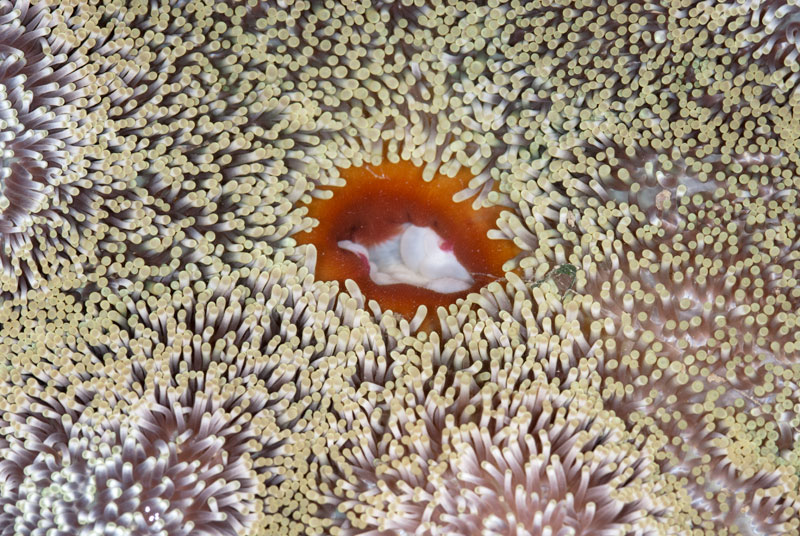 |
| Carpet anemone |
 |
| Tiny carpet anemone shrimp |
I think this is an anemone but it is difficult for me to tell when I am not able to see its body column or its tentacles.
 |
| Anemone? |
In the shallow lagoon on the northeastern side of the island there are a few cerianthids. These are not true anemones and we commonly refer them as peacock anemones. I came across one
Black-mouth cerianthid and an
Elegant cerianthid.
 |
| Black-mouth cerianthid |
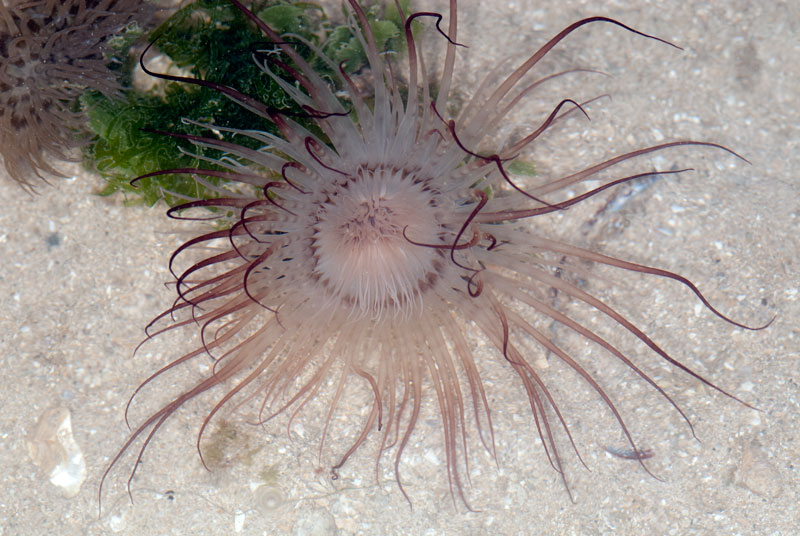 |
| Elegant cerianthid |
Bivalves
Bivalves are clams. Their shell consists of two valves connected by a hinge (equals to one shell). There were a few of the
Large cockles I came across. One of them seems to be either feeding or trying to burrow?
 |
| Opening |
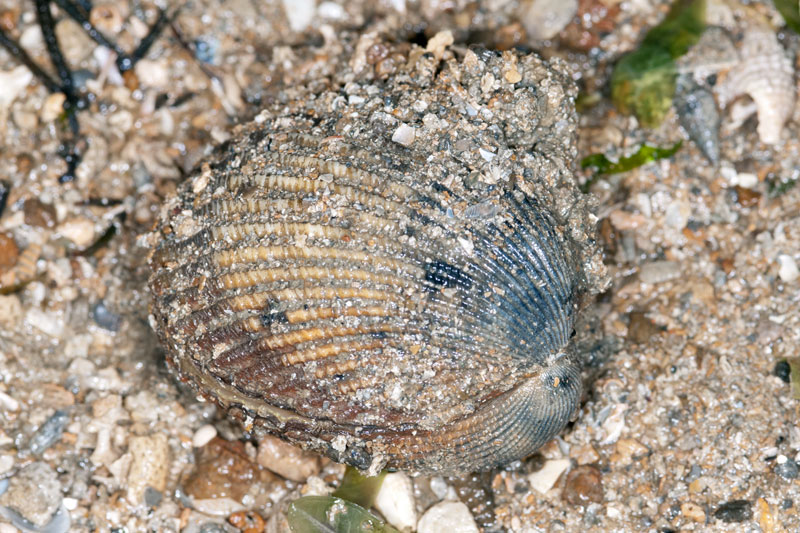 |
| Large cockle covered in sand, they are burrowing animals. |
 |
| Feeding? Burrowing? |
This interesting shell is actually a valve of a clam. The structure of the valve is interesting and this is probably my first time seeing such valve structure.
 |
| Top left profile |
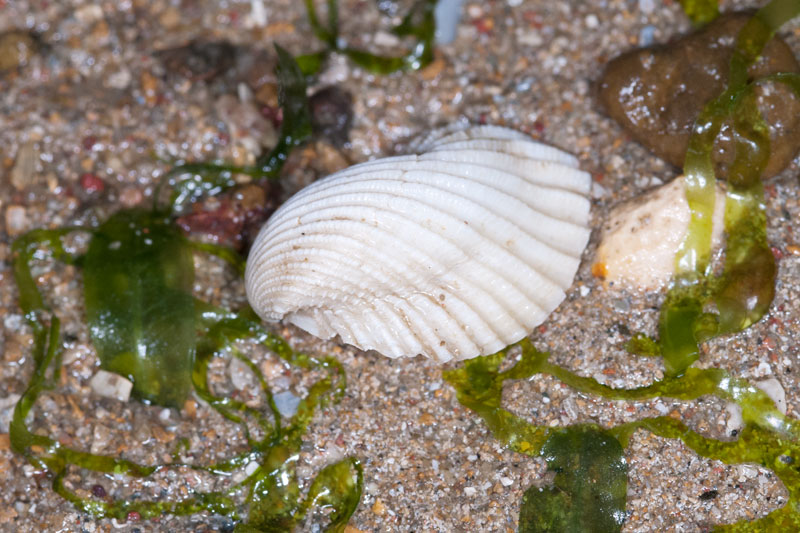 |
| Top right profile |
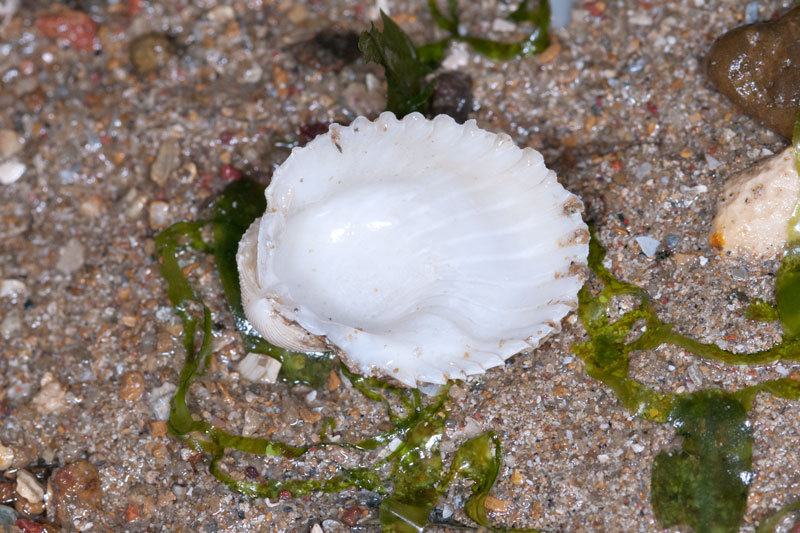 |
| Underside of valve |
 |
| Hinge side of the valve |
Shelled Snails
On every shore, it is quite certain for a marine snail to be seen. Like land snails, majority of the marine snails have carries a shell.
One of such marine snails are the cowries. I saw the
Miliaris cowrie (
Cypraea miliaris) and
Ovum cowrie (
Cypraea ovum).
 |
| Miliaris cowrie, fully covered in its mantle. |
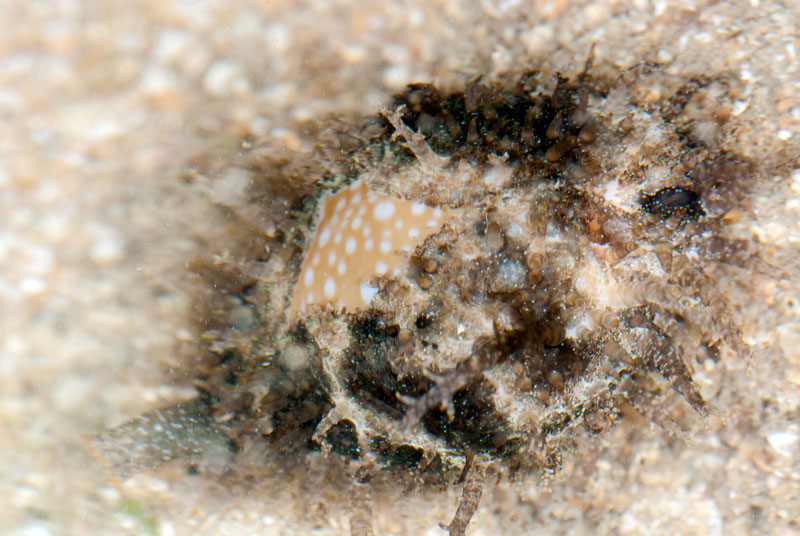 |
| Miliaris cowrie, revealing some of its shell. |
 |
| Ovum cowrie |
 |
| Ovum cowrie, underside |
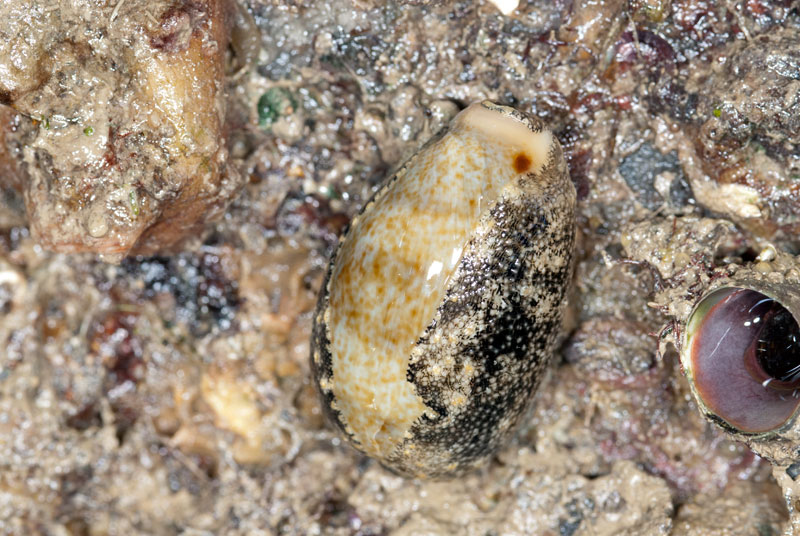 |
| Ovum cowrie, revealing its shell. |
Nearing the end of the trip, I came across two
Black-lipped conch (
Strombus urceus) laying eggs. The pale looking egg sacs have just been laid and the eggs can be clearly seen in the egg sac.
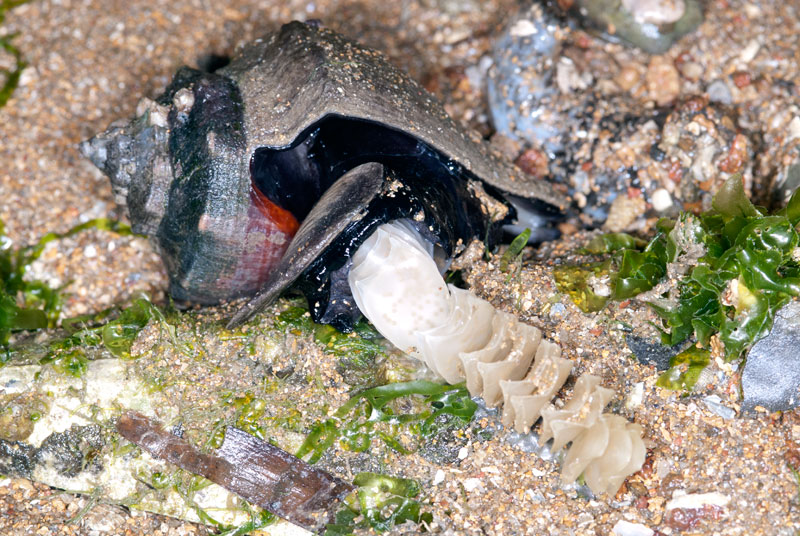 |
| Black-lipped conch laying eggs |
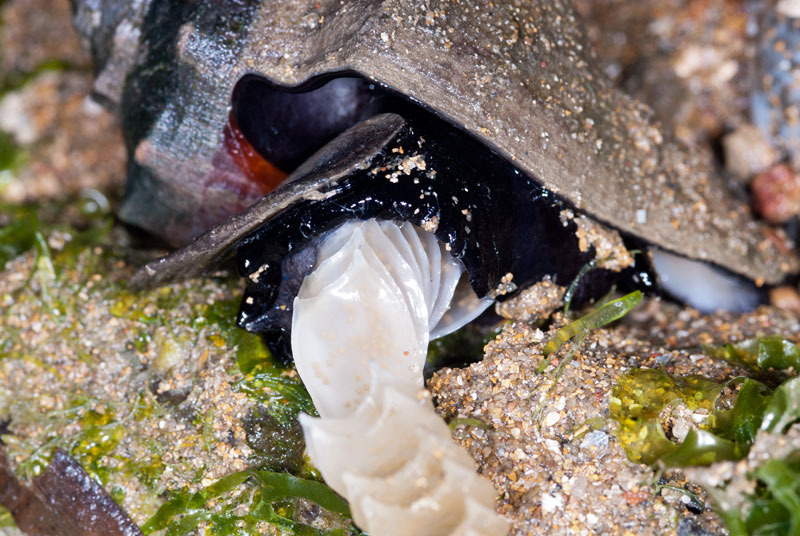 |
| Eggs in the sac |
This empty shell looks belongs to a moon snail.
 |
| Underside of moon snail shell |
 |
| Empty moon snail shell covered with seaweed. |
Sea slug
Kok Sheng found an interesting nudibranch. It looks like a sponge and I definitely would have missed the sea slug if I was the one to look for it. The identity of this slug is unknown at the moment.
 |
| Overview |
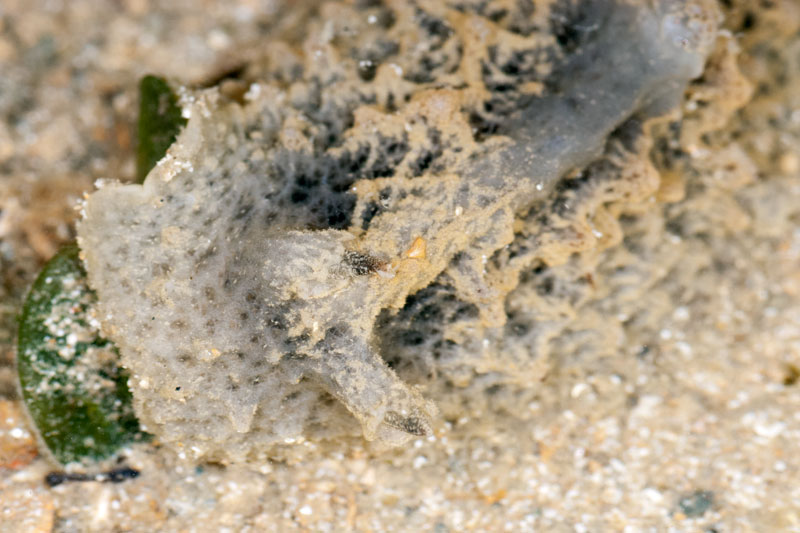 |
| Rhinophores with raised collar or sheath. |
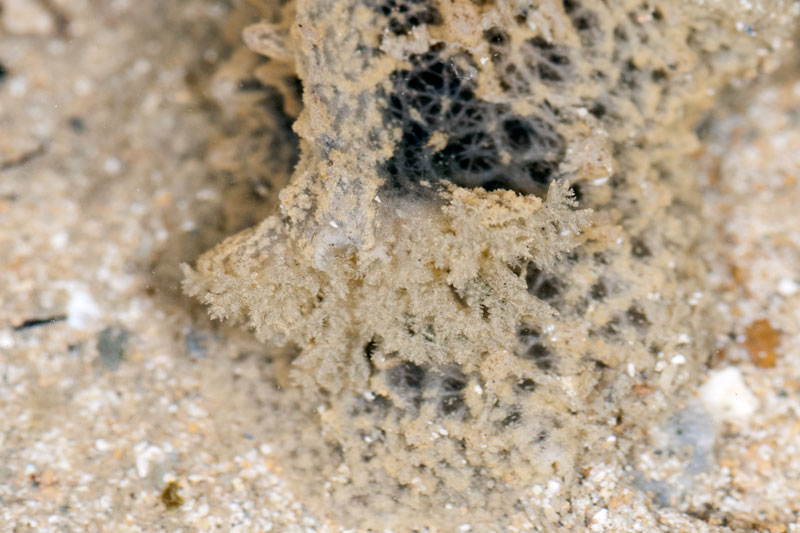 |
| Feathery gills |
 |
| Underside |
Shrimps
Other than the tiny anemone shrimp I saw moving on the carpet anemone and also in shallow pools among seagrass, I noticed interesting behaviour from the
red shrimp. It was an egg carrying red shrimp among the seagrass. The red shrimp moved towards the nearby group of red shrimp and moments later, it went head in into a hole, half of its length.
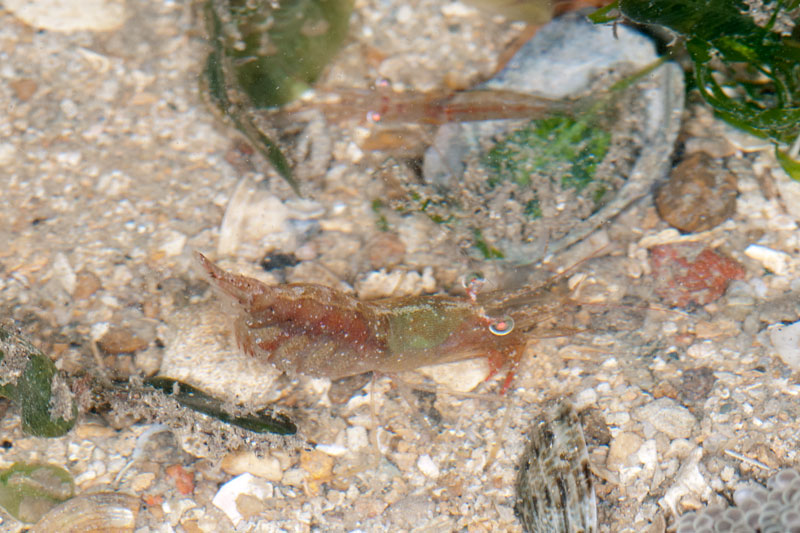 |
| Red shrimp with eggs |
 |
Only the tail and the eggs are visible.
The rest of the shrimp is in the hole (just below the other red shrimp's head). |
 |
| Side view of the in-the-hole red shrimp. |
It was interesting for me as this is my first time seeing an animal staying still, half burrowed in a hole and unaware of its environment.
Crabs
There were plenty of crabs on Sekudu, mostly
Stone crabs (
Myomenippe hardwickii).
Many of the stone crabs were easy to find on the shore.
 |
| Stone crab |
Some have damaged pincer.
 |
| Broken left pincer. |
Some enjoyed a bit of decoration from the
sea lettuce (
Ulva sp.) seaweed
 |
| Slightly covered in sea lettuce seaweed. |
While some totally enjoyed the additional vegetation on in.
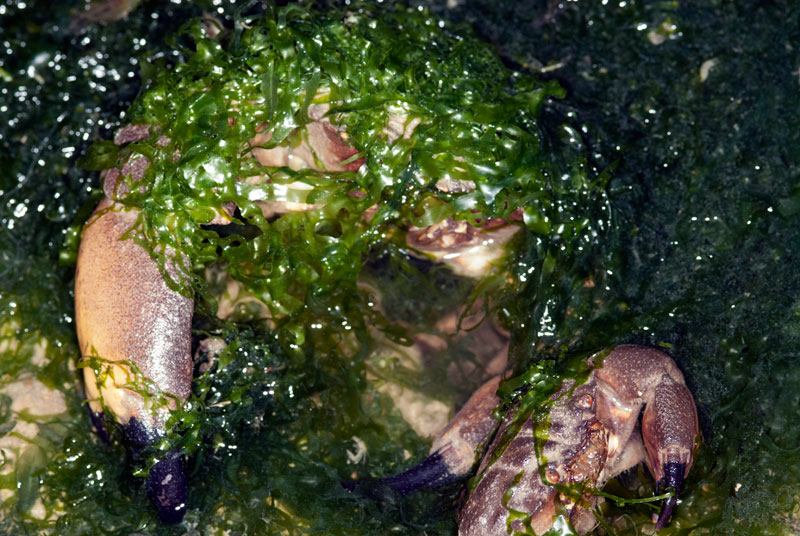 |
| Well covered with sea lettuce. |
On a think patch of sea lettuce seaweed, the
tiny porcelain crabs seems to be having a full moon party.
 |
| Tiny porcelain crabs |
The amazing
arrow-head spider crab (
Menatheius sp.) does the incredible leg cling on the big rock surface.
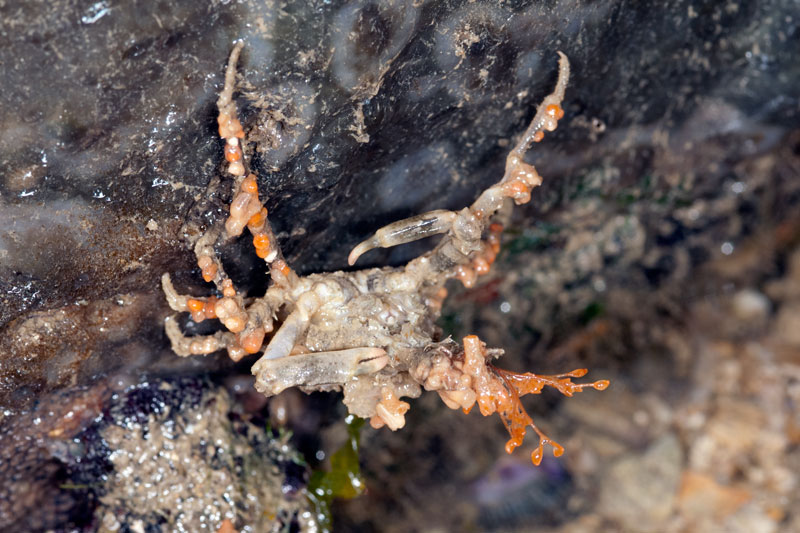 |
| Arrow-head spider crab |
This
flower crab (
Portunus pelagicus) had just moulted recently and is still waiting for its new exoskeleton to harden. It was semi hard when I felt the crab. During the moulting to exoskeleton hardening period, the crab is most vulnerable lurking predators as it is unable to defend itself. The new exoskeleton is also very fragile before it hardens, which makes it easy for predators to attack the crab.
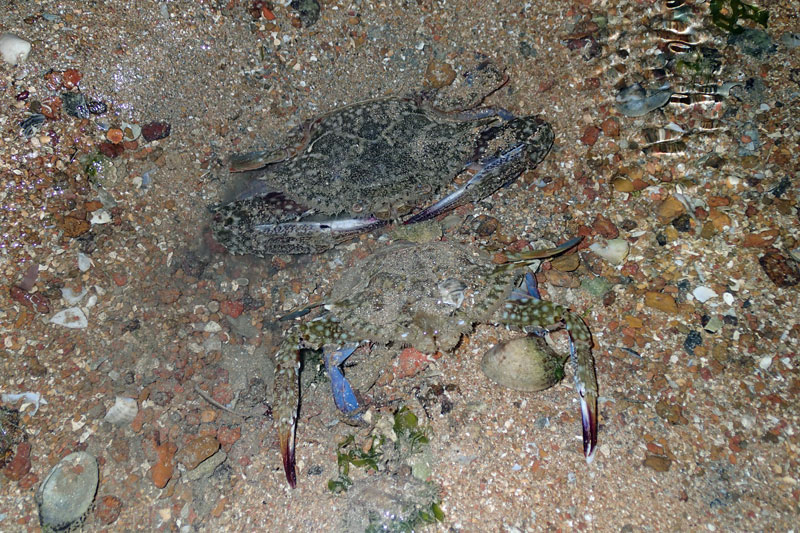 |
Above: Moulted flower crab
Below: The crab moult |
The above picture actually shows only one crab. The "crab" on the lower half of the image is actually the moult of the above crab. Comparing the moult to the crab, it grew about 1.5 times larger.
Worms
Not to long after we landed, I saw a
long reef bristleworm moving around on the sandy surface.
 |
| Reef bristleworm |
It does not even seem to be bordered by a crab that happened to bump into the worm.
 |
| Crab "sitting" on the worm |
With a closer look at the worm's head, it looks like a hairy dragon's head moving around the seagrass patches.
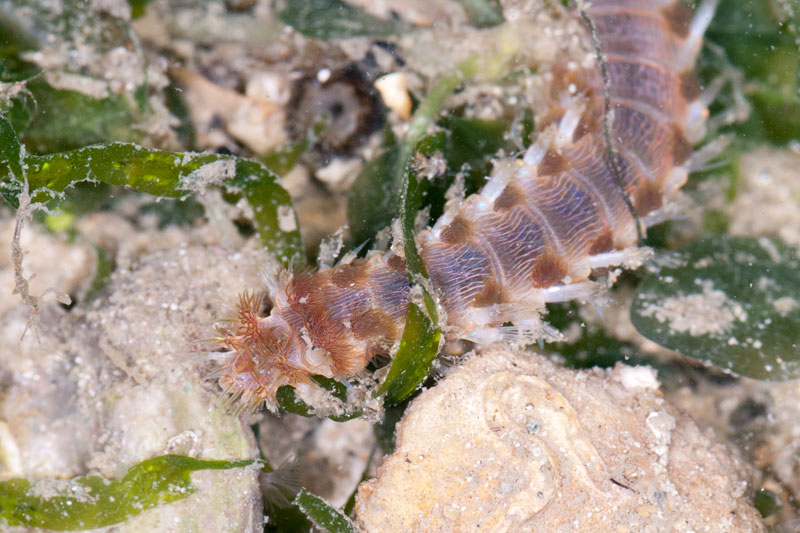 |
| Head of the bristleworm. |
The other kind of worm that I saw on this trip would be the
fine-lined flatworm.
 |
| Fine-lined flatworm |
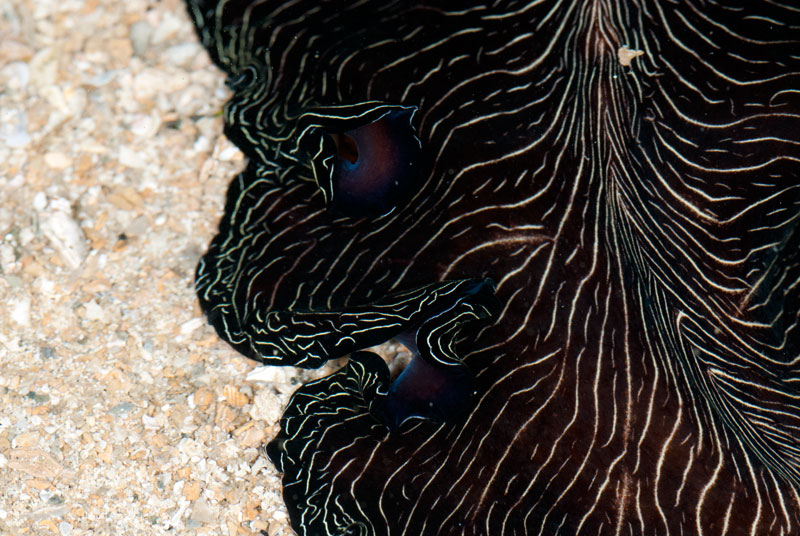 |
| Closer look at the edge of the flatworm |
 |
| Fine line details of the flatworm |
Echinoderms
Echinoderms includes sea stars, sea cucumbers, sand dollars, sea urchins, feather stars.
 |
| Pink sand dollar, underside. |
There was the cake sea star (
Anthenea aspera) and I did not notice the chiton nearby until I processed my photos.
 |
| Cake sea star |
 |
| Underside |
 |
| Closer look at the underside, showing the bivalve pedicellarie. |
Looking similar to the cake sea star would be the biscuit sea star (Goniodiscaster scaber).
 |
| Biscuit sea star |
 |
| Underside |
The fast moving
sand stars (
Astropecten sp.) can also be seen at Sekudu.
 |
| Painted sand star on sand |
 |
| Painted sand star on seagrass |
 |
| Orange worm on the underside of the sand star? |
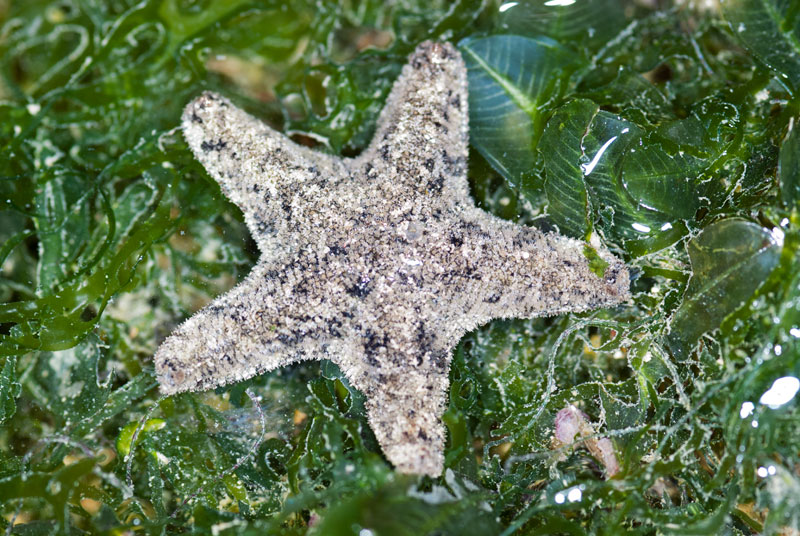 |
| Crown sea star |
 |
| Underside |
The
long-spined black sea urchins (
Diadema sp.)are ready scary and their sharp spines can inflict pain when it breaks in your skin. The close up image of the urchin, which shows the electric blue dots, the green outline along the spines and the bulbous anal sac.
 |
| Long-spined black sea urchin |
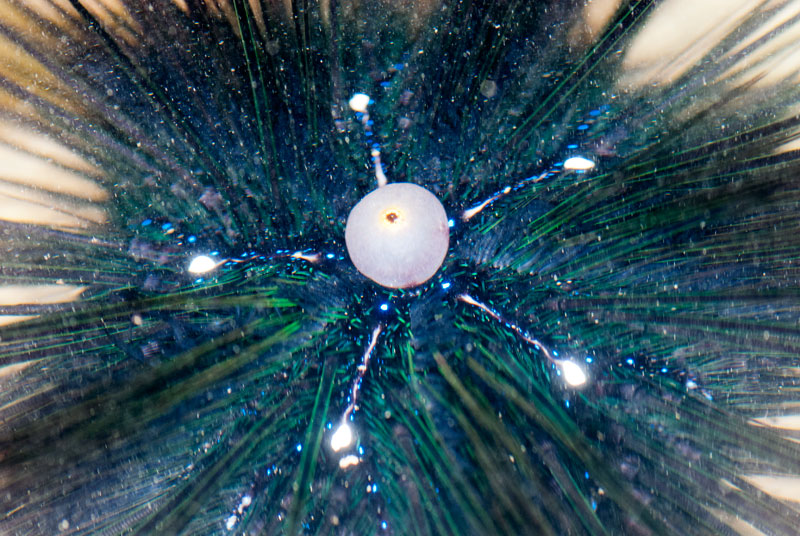 |
| Close up of the sea urchin |
Here is a video I took of the sea urchin moving.
Nearby, there was feather star.
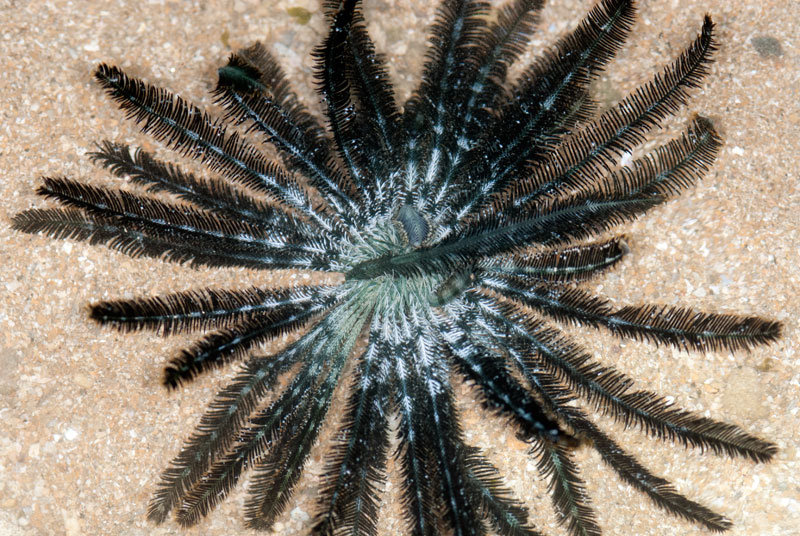 |
| Feather star |
There was an area on Sekudu that was heavily covered with
white sea urchins (
Salmacis sp.). Some of them are clean of covering objects, while some prefer to have a single object "shelter".
 |
| White sea urchin using leaf to camouflage. |
Fish
The in the shallow lagoon, there were Kite butterflyfish (
Parachaetodon ocellatus) of various sizes swimming near the carpet anemones.
 |
| Kite butterflyfish |
There was also number of the
three-spined toadfish (
Batrachomeous trispinosus).
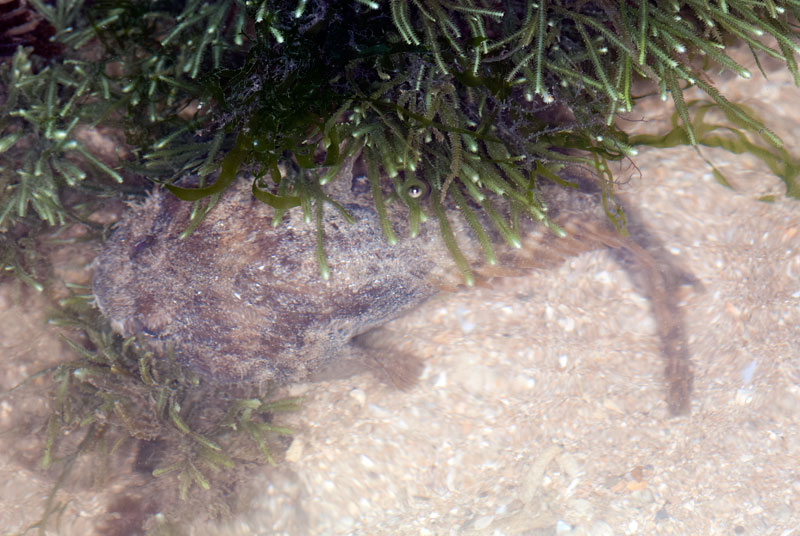 |
| Toadfish |
On the water surface, a
broad-nose halfbeak was careful not to get too close to me.
 |
| Broad-nose halfbeak |
This trip to Pulau Sekedu was made possible with permission from the National Parks Board (NParks). Today, I was trying to input the night time layout of the island in my brain while trying to look for interesting animals. I am sure I will be able to spot more things the next time I visited Sekudu.
Posts by others on this trip:
Kok Sheng -
Surprises from Sekudu in not-so-low tide
Marcus -
A berry good time
Ria -
Curious caterpillars at Sekudu: amphibious?















































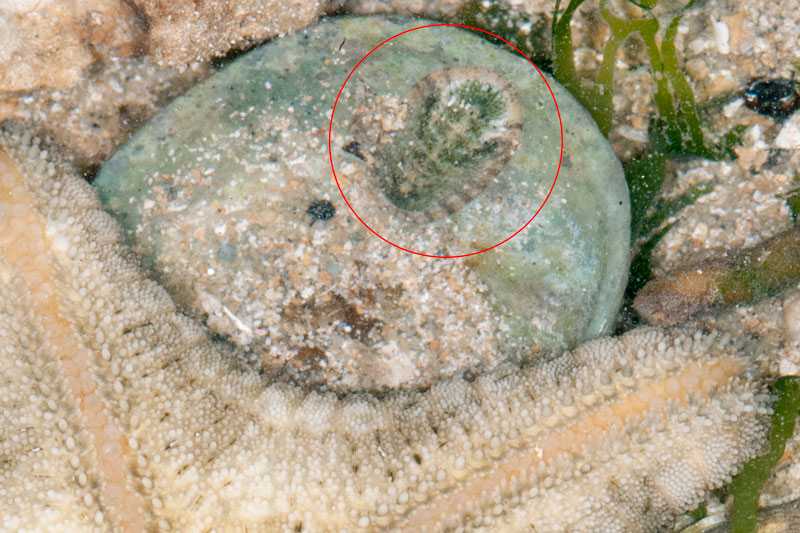














No comments:
Post a Comment